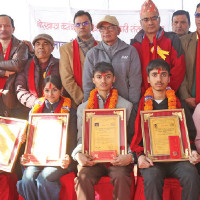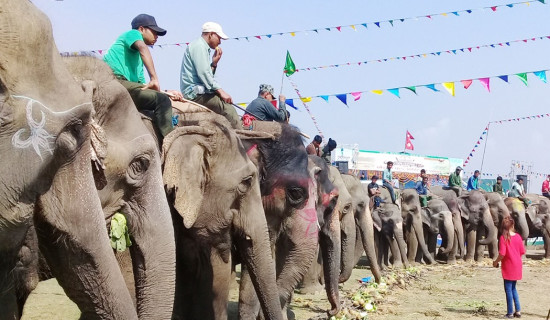- Sunday, 28 December 2025
Social Themes In Stories
The meaning of God cannot be complete in a specific sense. Since the time of the origin of ancient religious scriptures of the Vedas and various Puranas, and even from the periods of Granthas like the Ramayan and the Mahabharat, there are traditions in societies like the Guru-Shisya method of learning to explain meanings of God for enriching devotional empowerment in life.
The context here, however, is not religious but literary. What kind of face of God has Dibya Giri imagined in the book title piece of the Nepali story in his creation entitled “Ishworko Anuhar” (Face of God)? In fact, the meaning cannot be drawn with this piece only; there are many other pieces of the book, too, which need to be read to understand deep themes portrayed by the author. So, the face of God is expansionary, and this sense has been artistically portrayed in the stories of this book.
Clearly, the canvas of author Giri’s captures so many innocent curiosities, raises questions and draws appealing messages from the pains of his characters. God cannot be confined to a particular context of joy only; true pain and patience and innocent calls through Prarthana (prayers) to seek supreme compassion, especially in times of extreme troubles, too, are the names of God. Author Dibya Giri tells us this message in the storybook entitled “Ishworko Anuhar”.
The common perception about the literary beat of a story is that it is that expression which is like a small window to see glimpses of life. In this vein, we need to mention themes of the author with which he has woven sentiments on people and society.
The first story, “Sanakhat”, depicts a tragic end of a common man named Yam Bahadur. The second story, “Mukti” (Freedom), digs out the silent desire of help and freedom of a woman from her nagging alcoholic husband. The third story, “Photo”, is a pure love story related to the auspicious Tihar festival, where character Manmaya reveals her deep love for her disappeared brother.
Similarly, “Ishworko Anuhar”, the book title piece, too, needs to be mentioned once again because it is a symbolic story which, in the art of the author, highlights beautiful expressions about the innocent love of children towards domestic animals with which they play at home.
These are the few examples of story themes of the author. In fact, there are diverse themes. Giriji has displayed the dominant issues of the country and society in the form of a story for the Nepali readers.
In fact, gone were the troubled times, where there were many killings and violences. On the one hand, there were security forces to maintain law and order, and on the other hand, the Maoist rebels, who wanted to destroy the system in the name of insurgency. In this context, it is natural for the author to weave his sentiments with conflict themes in the collection “Ishworko Anuhar”.
Let’s see a few more cases of conflict themes, which have been picked by the author from this nightmarish time.
In one story, the author writes, “See, you teachers, you now must obey our order if you want your own good. Otherwise, anything can happen.
Here only our rules apply, and not anything else. This education you taught is corrupt.” (Page 60, story: “Agyat Samuha” (Unidentified Group).
In another story entitled “Pahichan”, a traumatic pain of rape has been described. In the daytime, the victim girl had seen the fearful presence of a soldier, who had come to her home to monitor the situation. But that same night, she suffered horrific rape in the dark room of her home. These are some descriptions in stories with conflict themes from the period of insurgency.
In fact, literature – that too in the beat of story writing – we find the present and past themes of our society. Readers can get the same things from history, too, which comes in plain writing and is not enough to stir emotions for readers. Truly, man values sentiments, and story writing treats this need artistically. The under-reviewed Ishworko Anuhar (Face of God) stirs emotions of readers and helps to remember ups and downs of life, which are bound to happen every time.
In conclusion, the author of this book needs no introduction. He holds decades-long passion in writing Muktak, Haiku and poems. His other prominent beat of literature is to write stories – short and long – both. In this context, what we have now from him is the 200-page storybook entitled “Ishworko Anuhar”. Its impressive literary presentation will intriguingly evoke the emotions we've experienced in the past, from joy to dread. No doubt, this collection is a mirror in the art of words to see our recent past.
(Kafle is a former Deputy Executive Editor of this daily.)
















